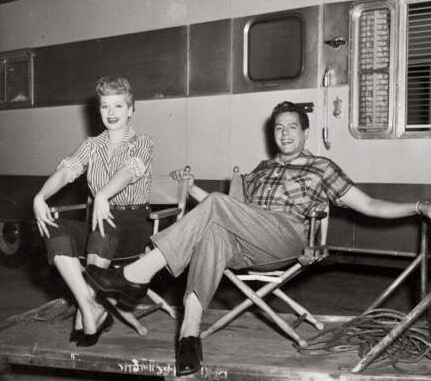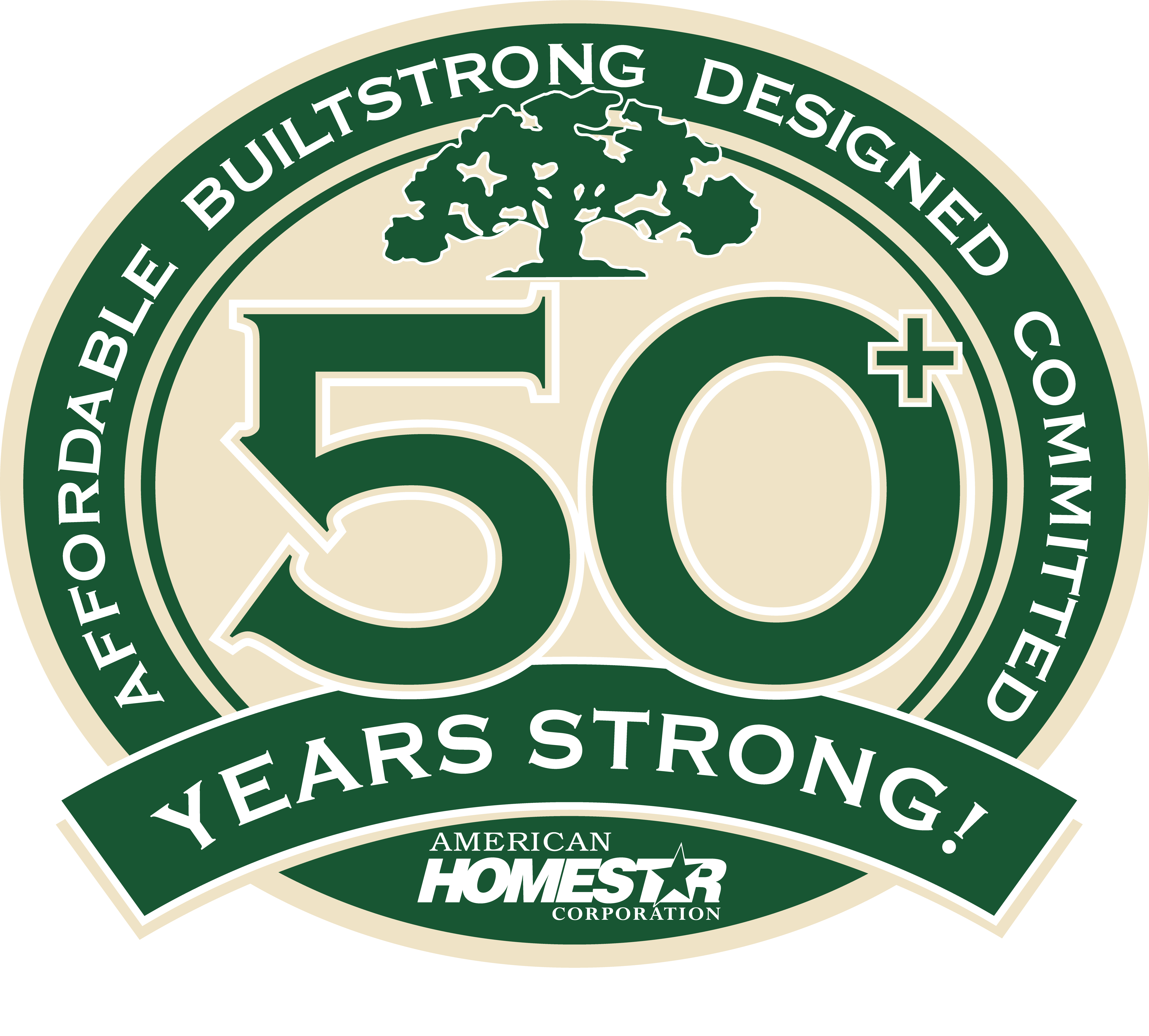Oak Creek Homes is in the business of manufacturing, selling, financing, and providing insurance products for consumers of factory-built housing. Its current product line includes everything from traditional low cost, single section homes to multiple-section, fully improved modular homes that are virtually indistinguishable from site-built housing. In order to fully understand the Company’s diverse offerings, a basic explanation of important terms is required.
You may remember Lucille Ball and Desi Arnez in the 1954 film, “The Long, Long Trailer”. In it the two stars act as honeymooners whose first home is just what the title describes, a trailer house. The earliest mobile homes were designed to be readily moved behind most any vehicle and bore more resemblance to today’s travel trailers than the homes the Oak Creek Homes builds today. As time progressed, these homes became larger and consequently were less likely to be moved. Just the same, the term “trailer house” and “mobile home” became part of the American vernacular to describe such products.
A 1976 legislative act, The HUD Title 6 Construction Standards Regulation brought strict construction standards to the industry, and the term “manufactured home” was adopted to reflect the newer and improved product. With time, advanced construction techniques made possible larger and more sophisticated homes. Houses with 2, 3 or even 4 sections became part of the landscape and were accented with new features such as genuine taped and textured interiors, high roof pitches and top-of-the-line finishing materials. This code was last updated in 2010.
In today’s market, there are basically two types of homes sold by Oak Creek Homes. Those built to HUD’s federal code are typically referred to as “manufactured” homes. The terms “trailer house” and “mobile home” are typically used to describe homes built before the 1976 legislation that defined the term “manufactured home”, but we know that many folks still like to use the older terms. Modular homes are those built to local building codes: the same as site-built homes. These homes are mostly constructed in our factory and then completed on site with an engineered foundation. It is important to understand the difference between the two types of homes.
The first type of home, a traditional HUD-code or manufactured home, is often referred to as a “mobile home” or “trailer house” by the general public. It is built to the strict standards of the federal government and is different from the modular home in several ways. First, all HUD code homes will come with a large permanent steel frame attached as its undercarriage. You have the option of having the steel frame removed on a modular home. Second, a manufactured home does not require an engineered foundation as part of its setup, though this approach will often provide a more stable footing for the home. It may also make it eligible for more attractive financing terms. There are several minor differences in the actual construction standards for a HUD-code home, a list of which is available by for download. It is also important to note that all of these differences add up to several thousands of dollars in savings for the consumer as compared to the purchase of a modular home.
 The second type of home sold in today’s market is the modular variety, which shares the same construction features as those you would expect in a site-built home. Unlike HUD-code homes, modular homes are built to meet local building codes and offer the best features of a factory-built home and a traditional site-built home. Upon delivery, it is required that modular homes are placed on an engineered foundation and the home be permanently affixed to the foundation. Consequently, a modular home exhibits the same strength as a traditional site-built home. Another difference is, as stated before, the consumer has the option of removing the steel frame from many modular models.
The second type of home sold in today’s market is the modular variety, which shares the same construction features as those you would expect in a site-built home. Unlike HUD-code homes, modular homes are built to meet local building codes and offer the best features of a factory-built home and a traditional site-built home. Upon delivery, it is required that modular homes are placed on an engineered foundation and the home be permanently affixed to the foundation. Consequently, a modular home exhibits the same strength as a traditional site-built home. Another difference is, as stated before, the consumer has the option of removing the steel frame from many modular models.
From a legal perspective, there is another key difference between the two types of homes. A HUD-code home may be installed on a leased site and can have a certificate of title issued by the State, much like a car title. Conversely, a modular home becomes real property once it is installed. It is considered an improvement to real estate. As a result, a modular home will always be financed as one with the land. So, if it is important that you not involve your land in the financing, HUD-code is the way to go.
It is important to note that, in Texas, a municipality cannot differentiate between a modular home and a site-built home. In other words, if a modular home meets the standards of the other newly constructed homes in the area, the municipality cannot prohibit the home’s entry into the neighborhood due to the fact that it is built in a factory. On the other hand, any community has the legal right to prohibit the introduction of manufactured homes into their jurisdiction. Like site-built housing, both modular and manufactured homes are subject to the individual zoning restrictions of the city and the subdivision in which they are being installed. Be sure to check your local zoning requirements and your deed restrictions prior to purchasing your home.
So which type of home is right for you? We can help you make the right decision. Come visit us and tell us your ideas and we can find the right home for you and your family. Whatever you want to call it: Prefab home, single wide, double wide, high-end dream home, affordable alternative, HUD-coded manufactured home, or modular cityscape, they are all available from Oak Creek Homes!




hello I’m interested in putting a modular home on land i DeSoto parish that very close to Shreveport, Louisiana I’ve seem to like some of the home would like to know if oak creek work in that area, i live in los angeles ca but I’m ready to come back home my family left 40 acres in the county, our family home is still standin. so I’m not sure to fix it updated are get a new modular. this wont be until next year just trying to see.
Hi, we have a location in Lake Charles. Here are a look at all our modular homes: https://oakcreek.homes/modularhomes
I’d like to see floor plans for the smallest modular home. Can these be made handicapped accessible .
With wider doors and a no lip shower.
Hi, Jana. Here is a look at all our modular homes: https://oakcreek.homes/modularhomes. A Team Member at the nearest Oak Creek Homes Center can best answer questions about handicapped accessible features… as it will depend upon the model you are interested in. If you’d like to provide your zip code, I’d be happy to connect you with your nearest locati
I am researching as to a MODULAR home of 1000-1200 square feet for installation in East Texas
HI, Dwaine. I apologize for the late response. Here’s a look at modular homes available from 875 to 1178 square feet. https://oakcreekhomes.com/find-a-home/?features=modular&square_feet_lower_bound=750&square_feet_upper_bound=1250
If you have additional questions… and would like to provide your zipcode, we can match you with your nearest location. 🙂
My bride & I live in the New Smyrna Beach area of FL, do you have a manufacturing facility that encompasses that area?
Hi, Douglas. Right now we can deliver to Texas, Oklahoma, Louisiana, and parts of New Mexico. We hope to get to Florida someday!
We would prefer to purchase our lot first but need information on modular homes to build on our lot
Hi, David. If you can provide your zip code, I’d be happy to connect you with a modular homes expert at your nearest Oak Creek Homes Center.